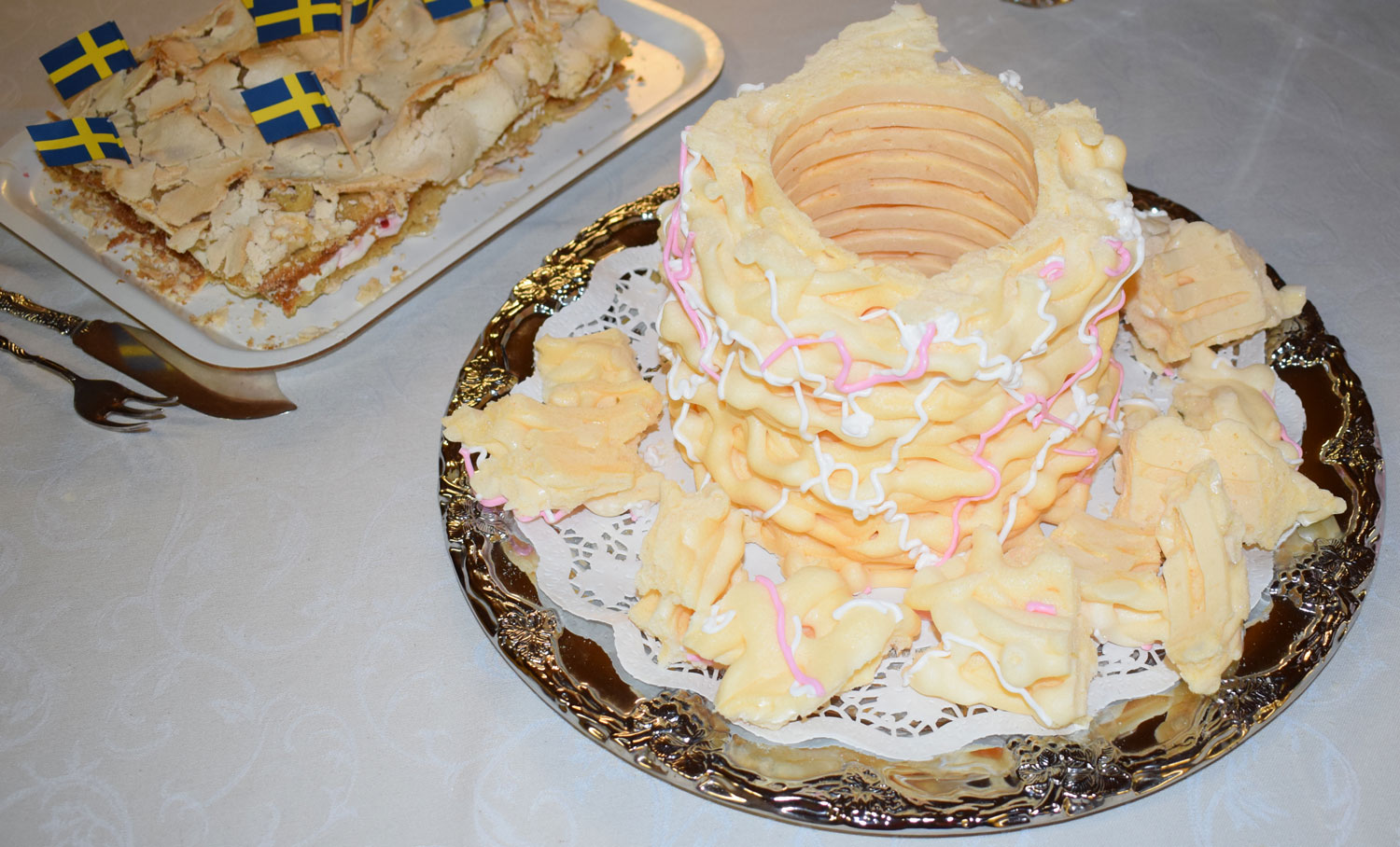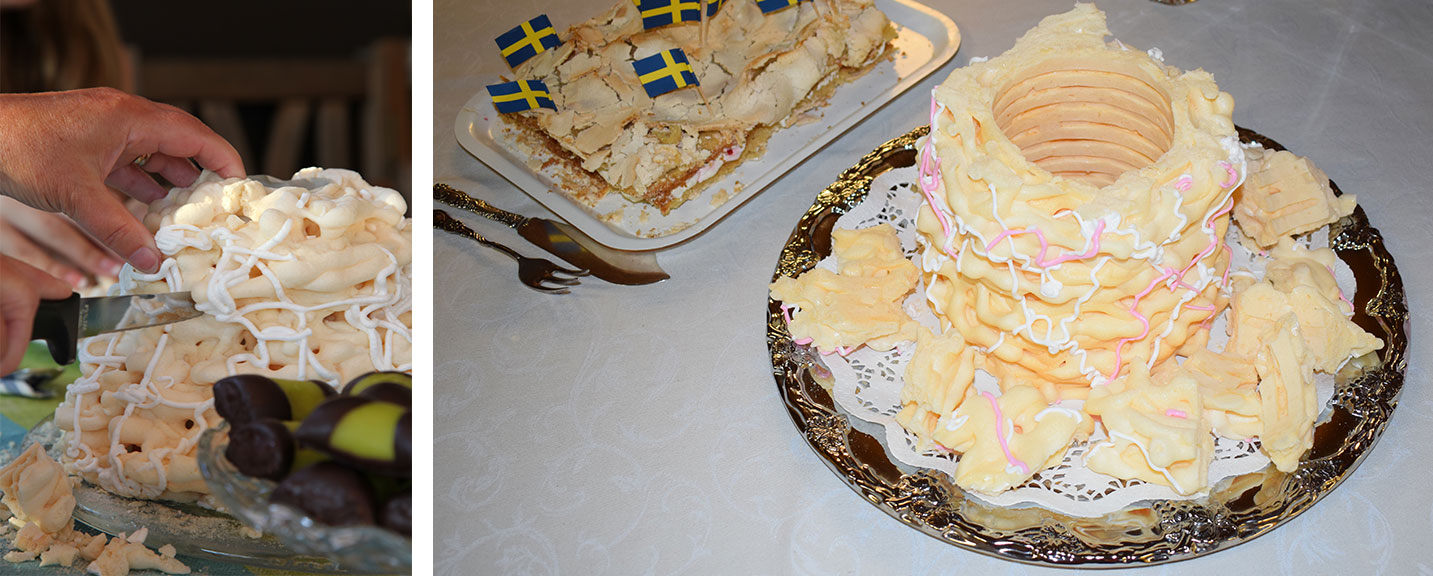- Startpage
- In English
- The Inventory
- Spettkaka
Spettkaka
Spettkaka is a cone-shaped cake mostly associated with the southernmost region of Sweden, Scania. The cake is made from a batter consisting of eggs, potato starch, and sugar.
Location: Skåne

Spettkaka is prepared by pouring the batter onto a slowly rotating cone or skewer. Each layer needs to bake and dry before the next is added. Finally, pink or white icing is added in a decorative pattern. Spettkaka was historically baked over an open fire.
Spettkaka should ideally be eaten while fresh, as the dry consistency of the cake makes it sensitive to moisture. It is a festive dessert that is served on special occasions, usually with coffee. When serving the cake, squares resembling small windows are cut out of the cake. The upper part of the cake should be saved to last, according to tradition.
The first historical mention of spettkaka in written sources dates from 1642, when it was served at the royal court of Queen Kristina. During the 19th century, spettkaka was a common festive dessert in southern Sweden. The popularity of the cake was likely connected to the good supply of eggs and potatoes. While spettkaka is associated with the Scania region in southern Sweden, there are similar cakes baked on skewers in other European countries.
The production of spettkaka is a specialized trade limited to certain bakers and bakeries. Today, there are about ten bakeries producing in spettkaka in Scania. Most have their own secret recipe. The art of making spettkaka is mostly passed on through these bakeries. While not as common as in the 19th century, spettkaka remains a living tradition as a dessert for special occasions, particularly in southern Sweden.


.jpg)